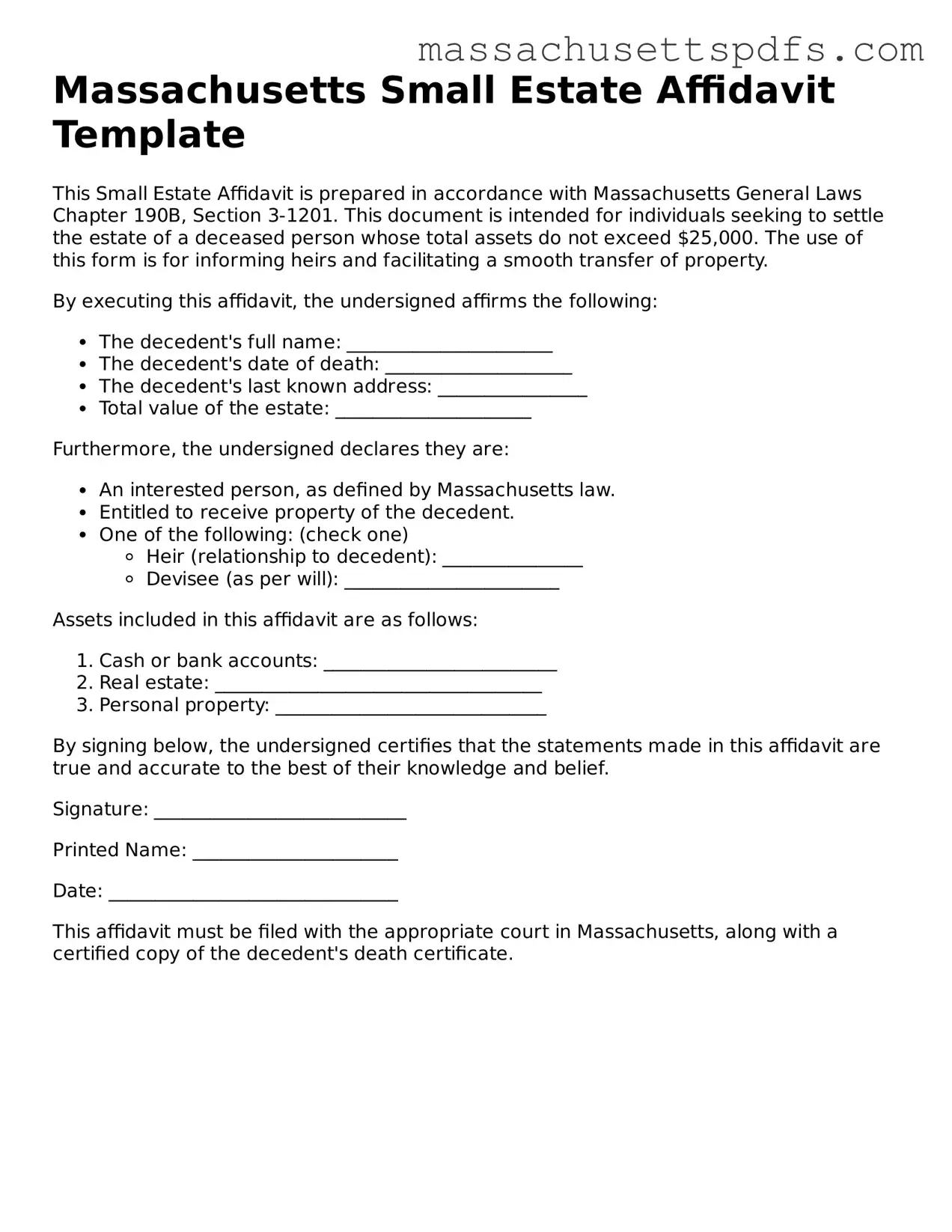Attorney-Approved Massachusetts Small Estate Affidavit Document
The Massachusetts Small Estate Affidavit is a legal document that allows individuals to settle the estate of a deceased person without going through the lengthy probate process, provided the estate meets certain criteria. This form simplifies the transfer of assets, making it easier for heirs to claim their inheritance. If you are ready to navigate this process, consider filling out the form by clicking the button below.
Launch Editor Here
